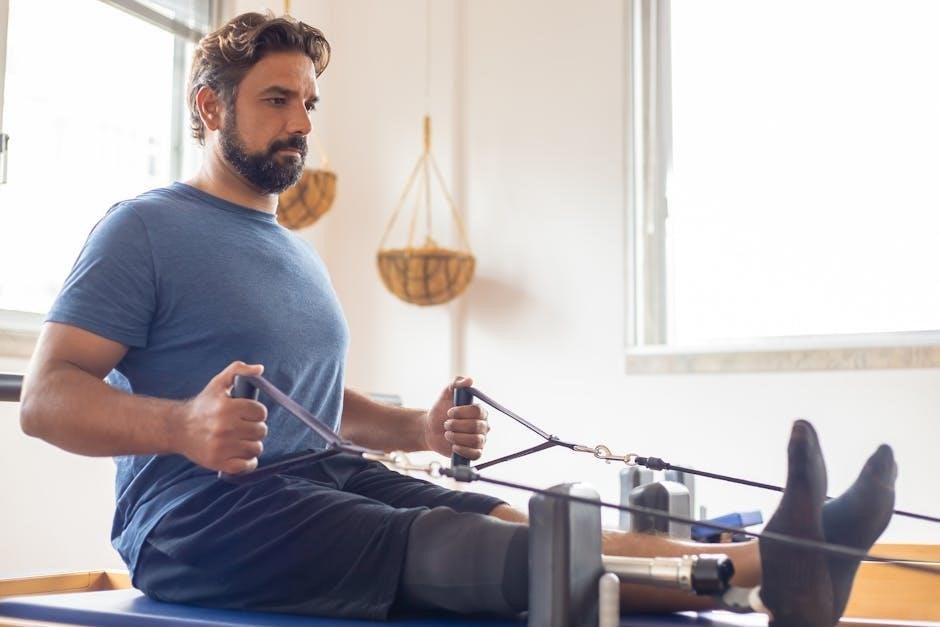
3 day push pull legs workout routine pdf
The 3-Day Push-Pull-Legs workout routine offers an efficient way to target all major muscle groups, balancing strength and hypertrophy while fitting into busy schedules.
Overview of the PPL Split
The Push-Pull-Legs (PPL) split is a proven training method that divides workouts into three categories: push days (chest, shoulders, triceps), pull days (back, biceps, rear delts), and legs days (lower body muscles). This structure ensures balanced development by targeting each muscle group effectively while allowing adequate recovery time. Designed for both beginners and intermediates, the 3-day PPL routine focuses on increasing strength and muscle growth. It typically spans 10 weeks, with adjustable intensity to suit individual goals. The split’s simplicity and efficiency make it a popular choice for those seeking a structured yet flexible approach to fitness, with PDF guides available for easy planning.
Why Choose a 3-Day Routine?
A 3-day Push-Pull-Legs routine is ideal for those seeking efficiency and balance in their training. It allows for full-body engagement while preventing overtraining, as each muscle group is targeted once weekly. This split is versatile, catering to both strength-focused and hypertrophy goals. Busy individuals benefit from its concise structure, fitting easily into tight schedules. Additionally, the routine promotes consistent progress and recovery, making it suitable for beginners and intermediates alike. Its popularity stems from its effectiveness in building muscle and improving overall fitness, with PDF guides available for easy implementation and tracking.
Benefits for Beginners and Intermediate Lifters
The 3-Day Push-Pull-Legs routine is highly beneficial for both beginners and intermediate lifters. For beginners, it provides a structured and simple approach to building strength and muscle without overwhelming complexity. The clear focus on major muscle groups ensures a solid foundation for further progress. Intermediate lifters benefit from the routine’s versatility, allowing for adjustments in intensity, volume, and exercise variations to continue making gains. The balanced structure supports recovery and prevents overtraining, while the time-efficient design fits well into busy schedules. Additionally, the availability of PDF guides makes it easy to follow and track progress, ensuring consistency and results for lifters at all levels.
Benefits of the Push-Pull-Legs Routine
The Push-Pull-Legs routine excels in efficiency, targeting all major muscle groups while promoting balanced development and symmetry. It’s ideal for busy schedules, ensuring consistent progress without overtraining.
Efficiency in Muscle Targeting
The Push-Pull-Legs routine is renowned for its ability to efficiently target all major muscle groups. By dedicating specific days to push (chest, shoulders, triceps), pull (back, biceps, rear delts), and legs, the routine ensures that each workout is focused and impactful. This structure prevents overlap and allows for maximum intensity in each session. It also enables trainees to avoid redundancy, as each muscle group is worked only once per week, optimizing recovery and growth. The streamlined approach makes it easier to track progress and maintain consistency, ensuring no muscle is left underdeveloped. This efficiency is a key reason why the PPL split remains popular among lifters.
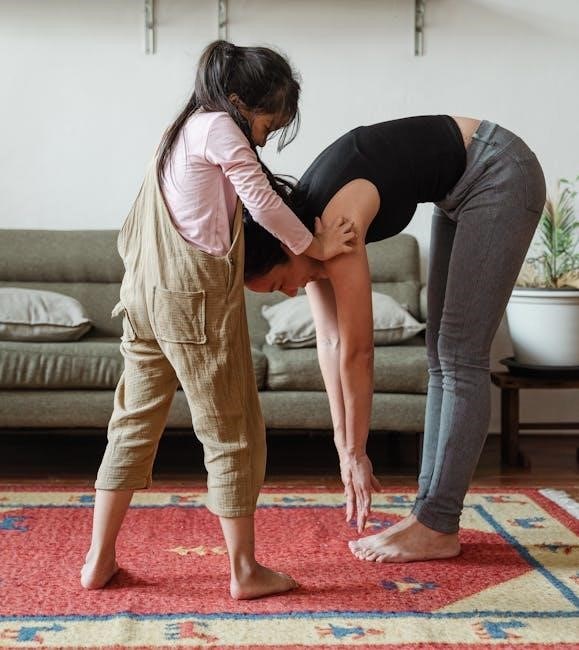
Balanced Muscle Development
The Push-Pull-Legs routine excels at promoting balanced muscle development by evenly distributing workouts across all major muscle groups. Each day focuses on specific areas: push (chest, shoulders, triceps), pull (back, biceps, rear delts), and legs (quads, hamstrings, glutes). This structure ensures no muscle group is overtrained or neglected, preventing imbalances that can lead to injury or aesthetic issues. By dedicating equal attention to upper body pushing and pulling movements, as well as lower body training, the routine fosters overall symmetry and athleticism. This balanced approach supports functional strength, longevity, and a visually appealing physique, making it ideal for both performance and aesthetic goals.
Time Efficiency for Busy Schedules
The 3-Day Push-Pull-Legs routine is highly efficient, making it perfect for individuals with limited time. Each workout focuses on specific muscle groups, allowing for productive sessions without unnecessary exercises. By dedicating one day to pushing movements (chest, shoulders, triceps), one to pulling (back, biceps, rear delts), and one to legs, you can target all major areas in just three days. This structure eliminates the need for lengthy, fragmented workouts, ensuring you maximize progress in minimal time. It’s ideal for those balancing fitness with work, family, or other commitments, providing a balanced yet time-conscious approach to building strength and muscle.
Enhanced Recovery Time
The 3-Day Push-Pull-Legs routine optimizes recovery by allowing ample time for muscle repair between workouts. Each muscle group is trained once weekly, with at least 48 hours of rest before being targeted again. This reduces overall training stress and minimizes the risk of overtraining. The schedule also incorporates rest days, enabling your body to adapt and grow stronger. Active recovery, such as light cardio or stretching, can be added on non-lifting days to promote blood flow and aid muscle repair. This balanced approach ensures consistent progress while maintaining physical and mental well-being, making it sustainable for long-term growth.
Structure of the 3-Day Workout Plan
The 3-Day Push-Pull-Legs routine divides workouts into Push Day (chest, shoulders, triceps), Pull Day (back, biceps, rear delts), and Legs Day (quads, hamstrings, glutes), with rest days in between for recovery and active recovery.
Day 1: Push Day (Chest, Shoulders, Triceps)
Push Day focuses on building strength and muscle in the chest, shoulders, and triceps. Begin with compound exercises like bench presses and overhead presses, then transition to isolation movements such as chest dips and lateral raises. Tricep pushdowns and skull crushers target the triceps. Aim for 4-6 sets per exercise, resting 60-90 seconds between sets. Adjust weights according to your fitness level, ensuring proper form to prevent injury. This structure maximizes hypertrophy while maintaining balanced development across the pushing muscles, setting a strong foundation for the rest of the routine.
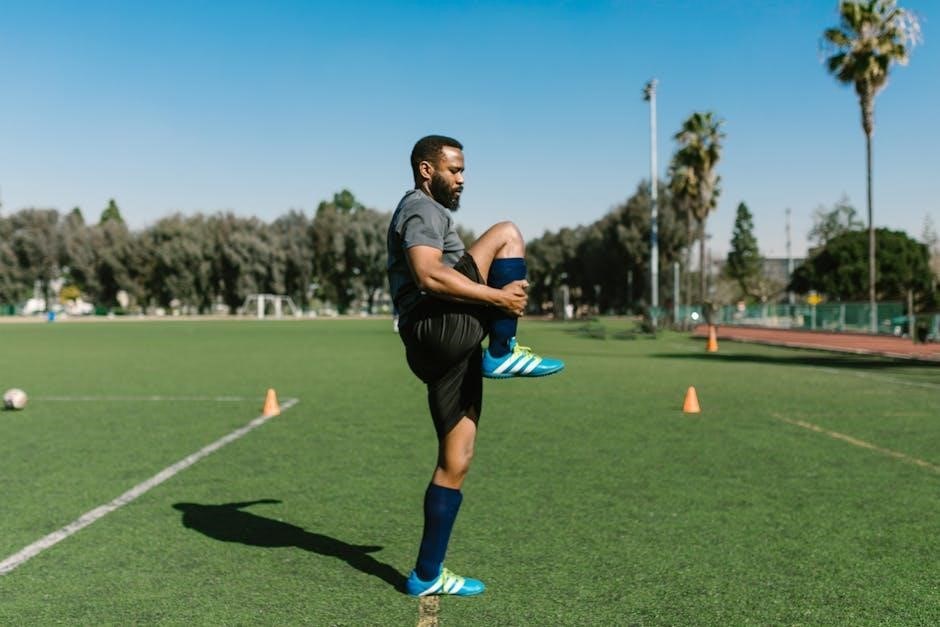
Day 2: Pull Day (Back, Biceps, Rear Delt)
Pull Day targets the back, biceps, and rear deltoids to build a strong, balanced upper body. Start with compound exercises like pull-ups or lat pulldowns to engage the lats, followed by bent-over rows for the middle back. Deadlifts or rack pulls can also be included for overall back development. For biceps, incorporate barbell or dumbbell curls, and hammer curls for variation. Rear delts are addressed with face pulls or reverse pec deck exercises. Aim for 4-6 sets per exercise, resting 60-90 seconds between sets. This day ensures comprehensive development of the pulling muscles, complementing the pushing muscles trained on Day 1.
Day 3: Legs Day (Quads, Hamstrings, Glutes)
Legs Day focuses on building strength and muscle in the lower body, targeting quads, hamstrings, and glutes. Begin with squats or leg presses for quad development, followed by deadlifts or Romanian deadlifts to engage hamstrings and glutes. Lunges and leg curls can add variation and isolation. Glute-focused exercises like hip thrusts or glute bridges enhance posterior development. Aim for 4-6 sets per exercise, with 60-90 seconds of rest between sets. Proper form is crucial to prevent injury and maximize muscle engagement. This day ensures balanced lower body growth, supporting overall athleticism and stability. Consistency and progressive overload are key to long-term gains.
Rest Days and Active Recovery
Rest days are crucial for muscle recovery and growth in the 3-day PPL routine. Active recovery, such as light cardio, stretching, or yoga, can improve circulation and reduce muscle soreness without stressing the muscles. Aim for 1-2 rest days between workout days, allowing your body to repair and adapt. Proper recovery ensures consistent progress and prevents overtraining. Use this time to focus on hydration, nutrition, and sleep to support muscle growth. Active recovery activities should be low-intensity and avoid targeting the same muscle groups worked during training. This balance promotes sustainability and long-term success in the routine.

Key Exercises for Each Day
- Push Day: Bench presses, shoulder presses, tricep dips.
- Pull Day: Deadlifts, pull-ups, bicep curls.
- Legs Day: Squats, lunges, leg presses.
Push Day Essentials
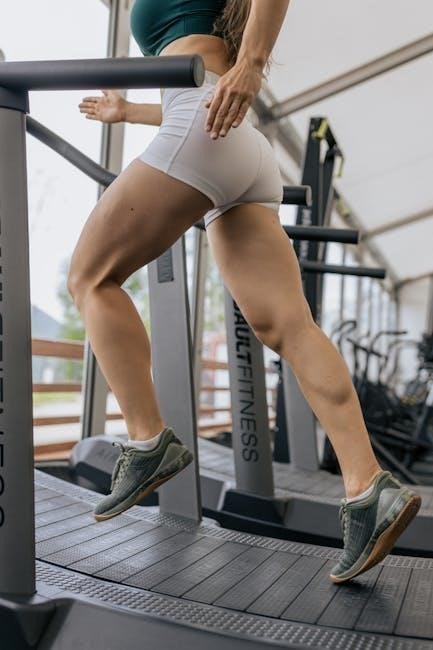
Push Day focuses on exercises targeting the chest, shoulders, and triceps. Essential movements include the bench press, incline bench press, and dumbbell presses for chest development. Overhead shoulder presses and lateral raises are critical for building strong, balanced shoulders. Triceps are engaged through dips, tricep pushdowns, and skull crushers. These exercises ensure comprehensive muscle activation and growth. Incorporating variations like cable presses or close-grip bench presses can enhance specificity. Prioritizing compound movements ensures efficiency and muscle engagement, while accessory exercises refine detail and strength. Adjusting sets, reps, and weights based on goals optimizes progress and avoids plateaus.
Pull Day Fundamentals
Pull Day focuses on back, biceps, and rear delt exercises. Essential movements include pull-ups, lat pulldowns, and deadlifts to target the latissimus dorsi and upper back. Bent-over rows and cable rows are key for building thickness and width. For biceps, barbell and dumbbell curls, along with hammer curls, are fundamental. Rear delts are engaged through face pulls and lateral raises. Proper form and progression are crucial for avoiding injury and maximizing growth. Incorporating variations like deficit deadlifts or wide-grip pull-ups can enhance specificity. Balancing volume and intensity ensures comprehensive development and prevents imbalances. Adjusting rep ranges and weights helps tailor the workout to individual goals.

Legs Day Priorities
Legs Day focuses on building strength and size in the quadriceps, hamstrings, and glutes. Essential exercises include squats, deadlifts, and leg presses to target the entire lower body. Lunges and leg curls are vital for isolating hamstrings and improving balance. Glute bridges and hip thrusts enhance posterior chain development. Proper form and progressive overload are key to avoiding injury and maximizing growth. Incorporating variations like sumo deadlifts or Bulgarian split squats can target specific areas. Balancing compound and isolation movements ensures well-rounded development. Adjusting rep ranges and focusing on mind-muscle connection helps achieve optimal results and prevent imbalances. Consistency and patience are crucial for long-term progress;
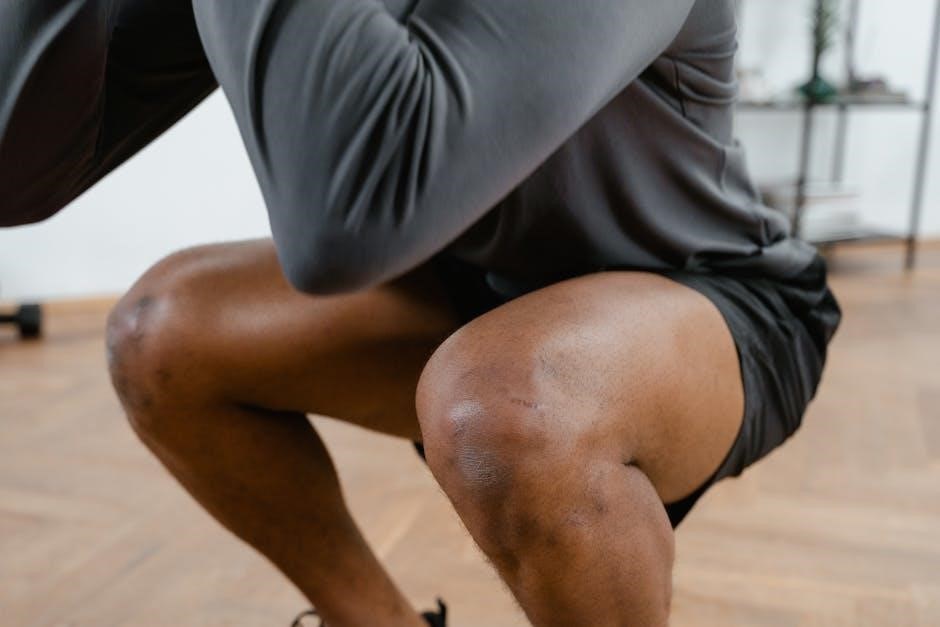
Nutrition and Recovery Tips
Proper nutrition and recovery are crucial for muscle growth and performance. Aim for a balanced diet rich in protein, carbs, and fats to fuel workouts and recovery. Prioritize hydration and ensure 7-9 hours of quality sleep nightly. Supplements like creatine and protein powder can enhance results. Active recovery, such as stretching or light walks, supports muscle repair. Consistency in nutrition and recovery routines maximizes gains and prevents overtraining, ensuring long-term success in the push-pull-legs routine.
Macronutrient Breakdown for Optimal Gains
A well-structured macronutrient breakdown is essential for muscle growth and recovery. Aim for 1.6-2.2g of protein per kilogram of body weight to support muscle repair and hypertrophy. Carbohydrates should comprise 4-5g per kilogram to fuel workouts and replenish glycogen stores. Fats, at 0.5-1g per kilogram, are crucial for hormone production and overall health. Balance your intake around workouts, with a pre-workout meal rich in carbs and protein, and a post-workout shake for rapid recovery. Spread meals evenly throughout the day to maintain steady nutrient flow. Prioritize whole foods but consider supplements to meet daily targets. Adjust ratios based on personal goals and progress.
Hydration and Sleep Importance
Hydration and sleep are critical for maximizing gains in a 3-day push-pull-legs routine. Aim to drink 3-4 liters of water daily, adjusting for sweat loss during workouts. Proper hydration supports muscle function, recovery, and nutrient absorption. Sleep is equally vital, with 7-9 hours nightly recommended for muscle repair and growth hormone production. Poor sleep quality can hinder recovery and performance. Prioritize a consistent sleep schedule, avoid caffeine before bedtime, and create a sleep-friendly environment. Combining adequate hydration and quality sleep ensures your body recovers effectively, allowing you to perform at your best in every training session.
Supplementation for Enhanced Performance
Supplementation can enhance performance and support muscle growth in a 3-day push-pull-legs routine. Protein powder is essential for meeting protein goals, aiding muscle repair, and promoting growth. Creatine monohydrate increases strength and endurance, while BCAAs (branched-chain amino acids) reduce muscle soreness and improve recovery. A pre-workout supplement can boost energy and focus during training. Multivitamins ensure nutrient deficiencies are addressed, and fish oil supports overall health and recovery. Always consult a healthcare professional before adding supplements to your regimen to ensure safety and effectiveness. Proper supplementation complements a well-structured diet and training plan, helping you achieve optimal results.
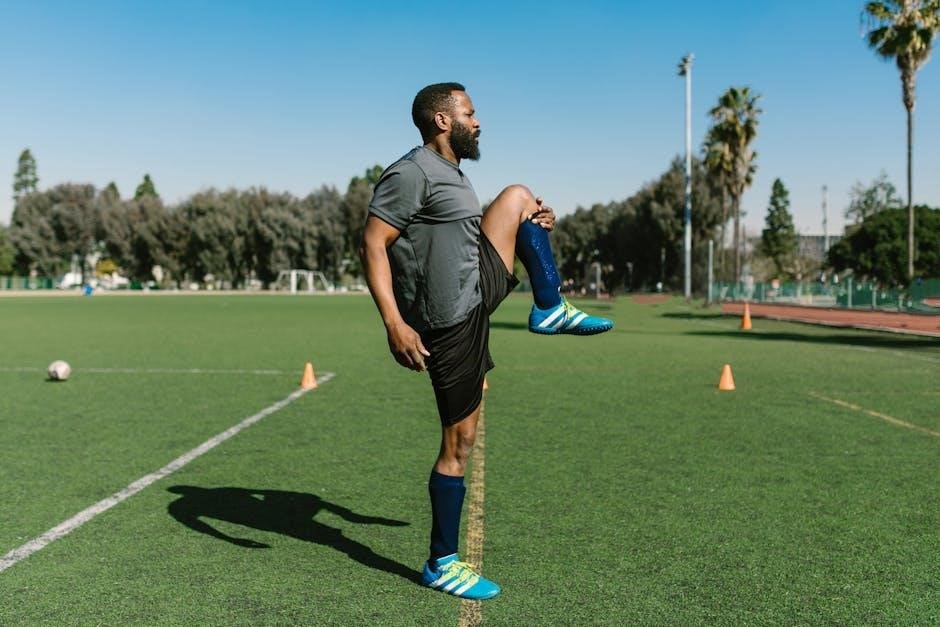
Progression and Scaling the Routine
Progression involves gradually increasing weight, volume, or intensity over time. Adjust rep ranges, sets, or exercises to suit goals, ensuring continued muscle growth and strength gains.
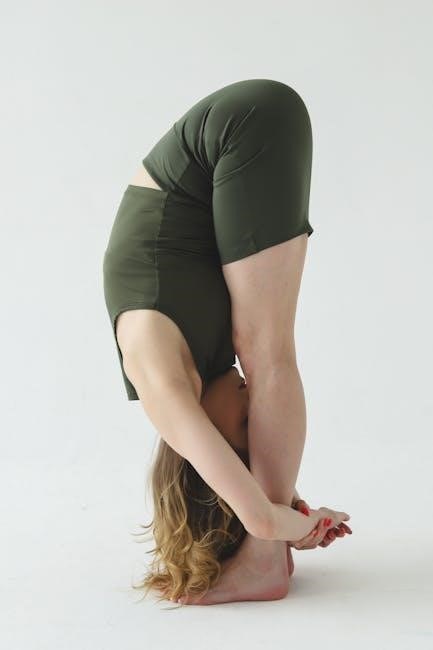
Increasing Weight and Volume Over Time
A key aspect of the 3-day push-pull-legs routine is progressively increasing weight and volume to challenge muscles and promote growth. Start by adding small increments of weight weekly, focusing on maintaining proper form. Over time, increase the number of sets or reps per exercise to build endurance and strength. For example, if you bench press 3 sets of 8 reps at 70kg, aim for 9-10 reps or add 2.5kg after a week. Track your progress in a workout log to ensure consistent improvement and avoid plateaus. This gradual overload helps muscles adapt and grow efficiently.
Adjusting Rep Ranges for Different Goals

Adjusting rep ranges is crucial for tailoring the 3-day push-pull-legs routine to specific goals. For strength, focus on lower reps (3-5) with heavier weights, while hypertrophy requires moderate reps (6-8) to balance volume and intensity. Endurance or muscle stamina can be developed with higher rep ranges (10-12+). By varying reps, lifters can target different muscle fibers and achieve their desired outcomes. For example, switching from strength to hypertrophy phases involves increasing reps while slightly reducing weight. This flexibility ensures the routine remains effective for diverse goals and prevents stagnation, allowing for continuous progress and adaptation. Proper rep range adjustment enhances overall training efficiency and results.
Incorporating Variations for Continued Growth
Incorporating variations into the 3-day push-pull-legs routine ensures continued growth by challenging muscles in new ways. Examples include changing grip widths, rep tempos, or exercise angles. For instance, swapping bench presses for incline presses targets different chest fibers. Similarly, varying pull-up grips (overhand vs. underhand) engages different back muscles. Adding pause reps, partial reps, or Isometric holds can enhance time under tension. Using resistance bands or machines alongside free weights also diversifies stress patterns. Periodically introducing new exercises, like cable flyes or face pulls, keeps the routine fresh and prevents plateaus. These variations ensure comprehensive development and sustained progress over time.
The 3-day push-pull-legs routine is a versatile and effective approach for building strength and muscle. Consistency and patience are key to achieving long-term success.
Summarizing the Effectiveness of the Routine
The 3-day push-pull-legs workout routine is highly effective for building balanced muscle mass and strength. By focusing on specific muscle groups each day, it ensures targeted growth and recovery. The split minimizes overlap, allowing for intense workouts without overtraining. It caters to both beginners and intermediate lifters, offering a clear structure for progression. Consistency and proper nutrition are key to maximizing results. This routine is ideal for those seeking a time-efficient, well-rounded training plan that promotes overall fitness and muscle development.
Encouragement for Consistency and Patience
Consistency is the cornerstone of success in the 3-day push-pull-legs routine. It’s important to stay committed, as progress takes time. Celebrate small victories and remind yourself why you started. Patience is key, as muscle growth and strength gains are gradual. Don’t get discouraged by plateaus—adjust your routine and keep moving forward. Surround yourself with motivation, track your progress, and stay disciplined. With time and effort, you’ll achieve your fitness goals. Remember, consistency breeds results, and patience builds champions. Stay focused, stay patient, and embrace the journey of transformation.